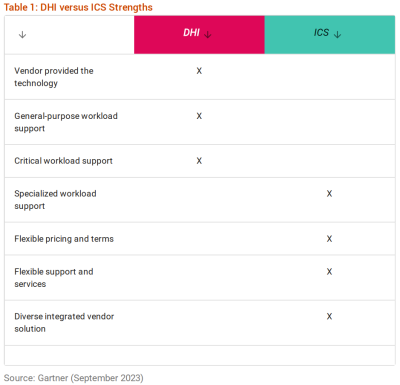-
Gartner said general purpose workloads are moving to the cloud faster than critical applications
-
By 2027, around 50% of critical workloads will run outside the public cloud
-
The industry is facing the question of migration vs modernization when it comes to these workloads
Don’t get us wrong. There’s a steady march of applications to the cloud. If you look at workloads as a whole, somewhere around 25-30% have already moved to the cloud, and by 2028 that figure will be 70-75%, according to Gartner. But there’s one subgroup of applications that is lagging and may never fully catch up: critical workloads.
According to Gartner Distinguished VP Analyst Dennis Smith, critical workloads are those without which a business couldn’t function properly. In the financial sector, for instance, this would include things like credit card and trading applications. Basically, these are a must have rather than the nice-to-have capabilities offered by general purpose workloads.
By 2027, Gartner predicted half of critical workloads will still be run outside the public cloud. (We should note this is different from the repatriation trend that Nutanix suggested could follow an innovation cycle in the cloud.)
Smith told Silverlinings it’s kind of an open secret that most of the easy workloads have already moved to the cloud while most critical workloads still run on-premises. That’s in part because stringent latency and reliability requirements for critical workloads mean “mainframes are still the best platform for a certain type of workload.”
Wait, what? Mainframes?! Yep.
Smith explained that in the cloud, you can deploy a massive amount of nodes that are all linked and work together. But that means – from a critical workload standpoint, at least – there’s a fair bit of latency added to the equation. Compare that to running a very stringent mainframe app that is vertically scaled and the latencies are all within the machine.

In a research note, Smith and his team at Gartner added that the utility of public clouds can be limited when deployments fall outside the locations chosen by public cloud providers. But these limitations don’t meet enterprise requirements and thus “many of these solutions are not comparable to current on-premises offerings.”
“We’re kind of coming into a new era now. What becomes of that workload? Does it move? A lot of it will move into a public cloud. However, a lot of it may be modernized withing an on-prem environment,” he concluded during a call with Silverlinings. “I think you’re already starting to see the cloud providers with their distributed cloud offerings and others that are starting to move their IP outside of the walls of the public cloud.”
Interested in debating and discussing the challenges of multi-cloud management with your peers? Meet up in Sonoma, Calif., from Dec. 6-7 for our Cloud Executive Summit.